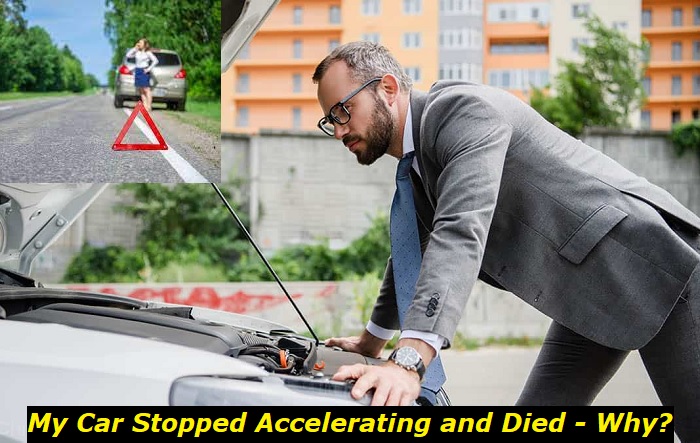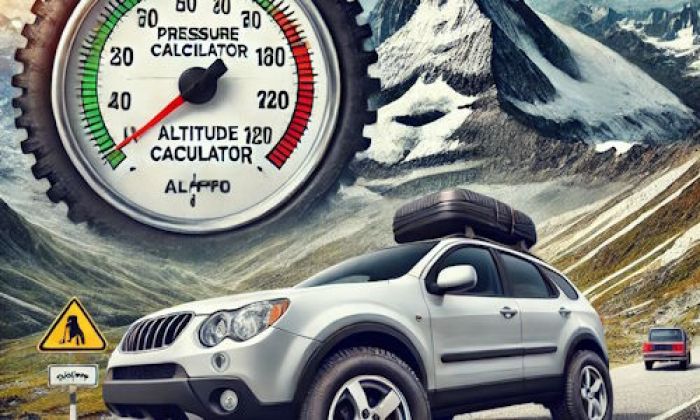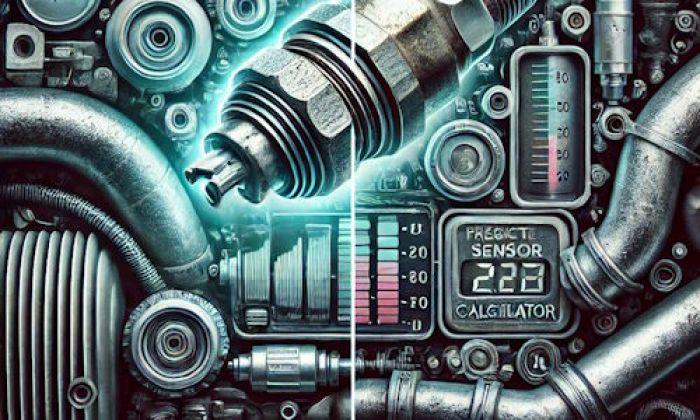Nobody wants to get stranded in the middle of the road because the vehicle refused to accelerate and, later, died. Sometimes, we are too busy not to notice some signs that came before your engine has stalled.
Engine stalling highlights
- Level of importance:High
- Commonreasons:Compression, electrical issues, fuel or air supply problems
- DIY inspection:Possible but complicated
- DIY repair:Impossible
- Price for repair:$250 - $1,500
- Can you drive?Very carefully
- Ways to fix:It's usually professional repaironlyunless the problem is with the air filter or some other part that's easy to replace.

Low or Empty Fuel Tank
Do not ignore when your fuel light indicates low fuel levels. The fuel pump cannot draw enough fuel from the vehicle tank with low fuel levels. The fuel pump injects fuels into the cylinder to ignite with the spark plugs. However, the low fuel levels will not be enough to ignite the spark plugs and generate power for your vehicle to accelerate.
Additionally, low fuel levels will dry up your fuel pump, which is not healthy as it can result in overheating.
To avoid this, keep an eye on your fuel levels. Otherwise, top up your tank immediately when your car suddenly stops and you find your fuel tank empty.
Inadequate Fuel Mixture
An inadequate mix of fuel and air could lead to your car stalling intermittently when accelerating. This event leads to the engine stopping acceleration and dying because there is not enough combustible material to generate power.
When you have an inadequate fuel-to-air ratio, your mixture could either be too lean or too rich, causing a power decrease in your engine.
To fix this problem, you should tune your engine or adjust your carburetor by removing the air filter and locating the adjustment screws. Make sure your air filter is clean. Also, look at the float levels. You should set it to receive an adequate amount of fuel-air mixture. Also, see if the choke valve is opening or closing. It could be the reason your engine cannot receive enough fuel-air mixture. Also, adjust the idle speed screw and make sure it is not set too low.
Malfunctioning or Damaged Sensor
Malfunctioning sensors can stop the engine from accelerating while driving because of wrong or inaccurate information sent by the sensors to the Engine Control Unit (ECU). The ECU sends instructions to vehicle components to improve performance, including fuel delivery. If the sensors send wrong information, your vehicle could misfire, resulting in power loss and acceleration.
The sensors that may affect vehicle acceleration are the crankshaft and camshaft position, oxygen, mass airflow, and throttle position sensors.
Here is the information each sensor sends to the ECU:
- The throttle position sensor measures the air intake of your vehicle engine.
- The crankshaft and camshaft position sensors are critical measurements for ignition timing, detection of RPM, and engine speed.
- The oxygen sensor measures the oxygen amount in the exhaust system.
- The mass airflow measures the airmass that flows in the air intake.
If your vehicle stops while driving, any of these sensors may malfunction. To find out which sensor needs replacement, you need to scan your computer with an OBDII scanner.
Fuel Supply System Problems
The fuel supply system comes with different components responsible for fuel supply to the ignition system for proper combustion of fuel needed for ignition. It uses a fuel pump, air filter, fuel lines, and regulators to ensure correct fuel delivery.
The most common fuel supply system problems come from the faulty fuel pump, clogged air filter, clogged fuel lines, dirty fuel injectors, loose or broken fuel pump wiring, or faulty fuel pump relay. Problems with these components will affect the fuel supply that generates power for the engine. For example, low fuel pressure would be inadequate to power up and accelerate your vehicle. Hence, it could drop when any of these components stop functioning correctly.
The only fix for faulty fuel pump units or components is a replacement.
Clogger air filters may need cleaning or replacement. Dirty fuel injectors will need professional cleaning or replacement.
To avoid these problems, check your fuel lines regularly. Check the air filter to keep the fuel clean from debris.
Keep your tank full. Check the fuel pump and injectors regularly.
Use only the recommended additives and fuel for your engine.
Keep fuel pressure according to specifications. And don't forget to inspect your air intake for any blockages.
Ignition Problems
Many components in the ignition system play a significant role in the combustion of the fuel-air mixture. From the ignition coil to the spark plugs, you will need them to ignite the fuel-air mixture and produce the power for acceleration.
If any of these components malfunction, you will have a problem igniting the fuel-air mixture and converting them into power to accelerate.
For example, if the spark plugs have worn out, they will not create a powerful spark to ignite the fuel during combustion. It could result in misfiring and eventual loss of power needed to accelerate. The only fix for this is the replacement of spark plugs.
The same goes for the ignition coil. If it could create the high-voltage spark it needs to complete ignition, it could also result in power loss during accelerating, causing the engine to die. In this case, you need to replace the ignition coil when necessary.
The distributor cap and ignition wires should also be in good shape to carry and distribute electricity to the spark plugs or ignition system. If these two fails, the spark plugs will not receive the necessary electricity to complete ignition resulting in loss of power.
Faulty Alternator
The alternator generates electricity using a crankshaft driven by a pulley. This electricity produces power for other electrical components like the spark plug, injectors, and the computer. Your engine will need electricity to ignite the spark plug. But it cannot generate enough electricity to power acceleration when there is poor electricity. It may be because of a broken serpentine belt, faulty diode, faulty wiring or fuse, or loose bearing.
While you can rebuild your alternator depending on the extent of damage, the best way to fix it is to replace the entire assembly so you can ensure that you are driving with a working alternator.
Low or Dead Battery
Being storage for electricity, you need the battery to have enough charge to provide enough electricity for your vehicle to accelerate. Your battery indicator should show your car's battery charge level.
Sometimes, the problem is not with the battery charge. It could be because of corroded or dirty connections or loose battery cables. These two cases will create insufficient electricity flow from the battery.
Exhaust System Problems
The exhaust system should function properly to accommodate the right amount of airflow. If the system has a malfunctioning EGR valve, it could let too much air or restrict the system from the air.
If it's always open, the air will get too lean. If it is closed most of the time, it will restrict airflow in the system. Both cases would result in the engine stopping from accelerating and dying. If your vehicle has a blocked EGR valve, it would need cleaning. A stuck open EGR valve needs an inspection to apply the necessary repair.
The same goes for clogged exhaust pipes or catalytic converters. These components play a significant role in maintaining clean emissions.
A clogged exhaust pipe will not deliver the right amount of exhaust gas produced. And when left not addressed, the blockage will pile up and the engine will stop acceleration.
For the catalytic converter, you need to replace it because you cannot clean it. For the muffler, you may clean it to remove the blockage.
The exhaust system should be open to accommodate converted fuel, so the other components can perform their job and keep the engine powered on.
Overheating Engine
Overheating can stop the engine from accelerating and then dying. It causes the fuel-air mixture to expand, reducing piston pressure and decreasing the power output generated. Also, this condition can damage various components such as spark plugs, cylinders, pistons, and valves.
A lot of causes can lead to overheating. The first thing to inspect is your cooling system. Check the coolant sensor, water pump, thermostat, radiator, oil levels, and head gaskets.
You need to know the underlying causes before you can perform any repair. Check your radiator for leaks or blockages.
Malfunctioning ECU
The Electronic Control Unit (ECU) plays a crucial role in receiving reports from sensors and translating them into actionable outputs. That includes powering up your engine.
However, the ECU can also fail due to several reasons. If your ECU receives incorrect information, it could instruct the wrong action to the different systems in your car. Also, the ECU is susceptible to physical damage, corrosion, loose connections, heat, and humidity. These problems would affect its performance. It has electronic components you should not touch unless you are a qualified technician.
For this reason, if you haven't fixed the malfunction with resetting, you need to bring it to your service shop for repair.
How to Troubleshoot a Vehicle that Stopped Accelerating?
In summary, here's what you should check when troubleshooting your engine that stops accelerating and dies.
- Check your ignition system. It is an important system to start your engine.
- Inspect your fuel system. Make sure there are no clogs in the fuel lines.
- Look at your air filter. It should be clean of dust and debris.
- Check vacuum leaks. Vacuum leaks can result in the engine running lean.
- Also, make sure to set the timing correctly.
- Check your cooling system. Your vehicle could stop because of overheating.
- Also, ensure that your battery has enough charge to run your car.
Here's a tip
You can check if your car's immobilizer recognizes your key. Look at your dashboard and see if the icon disappears a few seconds after you turn the ignition on. Your immobilizer might be preventing your engine from initiating a spark.
Other else, if you cannot find out the cause of the problem, you can always seek professional help.
About the authors
The CarAraC research team is composed of seasoned auto mechanics and automotive industry professionals, including individuals with advanced degrees and certifications in their field. Our team members boast prestigious credentials, reflecting their extensive knowledge and skills. These qualifications include: IMI: Institute of the Motor Industry, ASE-Certified Master Automobile Technicians; Coventry University, Graduate of MA in Automotive Journalism; Politecnico di Torino, Italy, MS Automotive Engineering; Ss. Cyril and Methodius University in Skopje, Mechanical University in Skopje; TOC Automotive College; DHA Suffa University, Department of Mechanical Engineering






Add comment